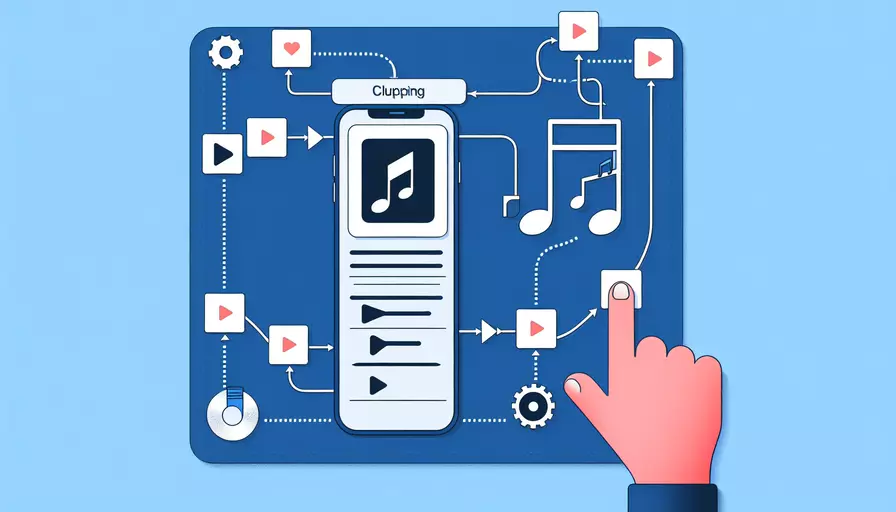
在Vue项目中剪辑音乐有几种方法,1、使用第三方库,2、使用Web Audio API。这两种方法各有优缺点:使用第三方库可以简化开发过程,节省时间;使用Web Audio API则提供了更大的灵活性和控制权。接下来,我们将详细介绍这两种方法。
一、使用第三方库
使用第三方库如wavesurfer.js或howler.js可以大大简化音频剪辑的实现。以下是使用wavesurfer.js进行音频剪辑的步骤:
- 安装wavesurfer.js
- 初始化wavesurfer实例
- 加载音频文件
- 设置剪辑区间
- 导出剪辑后的音频
npm install wavesurfer.js
// 在 Vue 组件中
import WaveSurfer from 'wavesurfer.js';
export default {
data() {
return {
wavesurfer: null,
startTime: 0,
endTime: 0,
};
},
mounted() {
this.wavesurfer = WaveSurfer.create({
container: '#waveform',
waveColor: 'violet',
progressColor: 'purple',
});
this.wavesurfer.load('path/to/your/audiofile.mp3');
},
methods: {
setClip(start, end) {
this.startTime = start;
this.endTime = end;
},
exportClip() {
const audioContext = this.wavesurfer.backend.ac;
const originalBuffer = this.wavesurfer.backend.buffer;
const clipBuffer = audioContext.createBuffer(
originalBuffer.numberOfChannels,
(this.endTime - this.startTime) * originalBuffer.sampleRate,
originalBuffer.sampleRate
);
for (let i = 0; i < originalBuffer.numberOfChannels; i++) {
const channelData = originalBuffer.getChannelData(i);
clipBuffer.copyToChannel(
channelData.subarray(
this.startTime * originalBuffer.sampleRate,
this.endTime * originalBuffer.sampleRate
),
i
);
}
const offlineContext = new OfflineAudioContext(
clipBuffer.numberOfChannels,
clipBuffer.length,
clipBuffer.sampleRate
);
const source = offlineContext.createBufferSource();
source.buffer = clipBuffer;
source.connect(offlineContext.destination);
source.start();
offlineContext.startRendering().then((renderedBuffer) => {
offlineContext.decodeAudioData(renderedBuffer, (decodedData) => {
// 处理剪辑后的音频数据
});
});
},
},
};
二、使用Web Audio API
Web Audio API 提供了更加底层的音频处理能力,适合需要高度定制音频处理的场景。以下是使用Web Audio API进行音频剪辑的步骤:
- 创建AudioContext
- 加载音频文件
- 创建BufferSource
- 设置剪辑区间
- 导出剪辑后的音频
// 在 Vue 组件中
export default {
data() {
return {
audioContext: new (window.AudioContext || window.webkitAudioContext)(),
audioBuffer: null,
startTime: 0,
endTime: 0,
};
},
methods: {
loadAudio(file) {
const reader = new FileReader();
reader.onload = (e) => {
this.audioContext.decodeAudioData(e.target.result, (buffer) => {
this.audioBuffer = buffer;
});
};
reader.readAsArrayBuffer(file);
},
setClip(start, end) {
this.startTime = start;
this.endTime = end;
},
exportClip() {
const clipBuffer = this.audioContext.createBuffer(
this.audioBuffer.numberOfChannels,
(this.endTime - this.startTime) * this.audioBuffer.sampleRate,
this.audioBuffer.sampleRate
);
for (let i = 0; i < this.audioBuffer.numberOfChannels; i++) {
const channelData = this.audioBuffer.getChannelData(i);
clipBuffer.copyToChannel(
channelData.subarray(
this.startTime * this.audioBuffer.sampleRate,
this.endTime * this.audioBuffer.sampleRate
),
i
);
}
const offlineContext = new OfflineAudioContext(
clipBuffer.numberOfChannels,
clipBuffer.length,
clipBuffer.sampleRate
);
const source = offlineContext.createBufferSource();
source.buffer = clipBuffer;
source.connect(offlineContext.destination);
source.start();
offlineContext.startRendering().then((renderedBuffer) => {
// 处理剪辑后的音频数据
});
},
},
};
三、比较两种方法
| 方法 | 优点 | 缺点 |
|---|---|---|
| 第三方库 | 简化开发过程,文档丰富 | 依赖外部库,灵活性较低 |
| Web Audio API | 高度灵活,完全控制音频处理 | 需要更多的代码和音频处理知识 |
四、实例说明
假设我们有一个音乐剪辑应用,需要用户可以选择音频文件并设定起始和结束时间,然后导出剪辑后的音频。我们可以使用上述两种方法中的任意一种来实现这个功能。
- 选择音频文件
- 设定剪辑区间
- 导出剪辑后的音频
通过这些步骤,用户可以轻松地剪辑和导出他们需要的音频片段。
总结:使用第三方库如wavesurfer.js,可以快速实现音频剪辑功能,适合对灵活性要求不高的场景;而使用Web Audio API则提供了更强的定制能力,适合需要高度控制音频处理的场景。根据具体需求选择合适的方法,可以有效提升开发效率和用户体验。
建议:在选择实现方法时,首先明确项目的具体需求和目标,评估两种方法的优缺点,并结合团队的技术栈和开发经验,做出最适合的选择。
相关问答FAQs:
1. Vue如何在网页中播放音乐?
在Vue中播放音乐可以通过使用HTML5的< audio >标签来实现。你可以在Vue组件中添加一个< audio >标签,并在其中指定音乐文件的URL。然后,你可以使用Vue的生命周期钩子函数(如created)来控制音乐的播放和暂停。
以下是一个示例代码:
<template>
<div>
<audio ref="audioPlayer" :src="musicUrl"></audio>
<button @click="playMusic">播放</button>
<button @click="pauseMusic">暂停</button>
</div>
</template>
<script>
export default {
data() {
return {
musicUrl: '音乐文件的URL'
}
},
methods: {
playMusic() {
this.$refs.audioPlayer.play();
},
pauseMusic() {
this.$refs.audioPlayer.pause();
}
}
}
</script>
在上面的代码中,我们通过ref属性给< audio >标签指定了一个引用名称,然后在playMusic和pauseMusic方法中使用this.$refs.audioPlayer来控制音乐的播放和暂停。
2. 如何在Vue中实现音乐剪辑功能?
要在Vue中实现音乐剪辑功能,你可以使用一些第三方的音频处理库,比如wavesurfer.js。这个库可以让你在网页中显示音频波形,并提供了一些剪辑音频的功能。
首先,你需要引入wavesurfer.js库。你可以使用npm安装该库,然后在Vue组件中导入并实例化wavesurfer对象。接着,你可以通过调用load方法来加载音频文件,并使用wavesurfer对象的一些方法来控制剪辑操作。
以下是一个示例代码:
<template>
<div>
<div ref="waveform"></div>
<button @click="play">播放</button>
<button @click="pause">暂停</button>
<button @click="clip">剪辑</button>
</div>
</template>
<script>
import WaveSurfer from 'wavesurfer.js';
export default {
mounted() {
this.waveform = WaveSurfer.create({
container: this.$refs.waveform,
waveColor: 'red',
progressColor: 'purple',
barWidth: 2
});
},
methods: {
play() {
this.waveform.play();
},
pause() {
this.waveform.pause();
},
clip() {
// 剪辑操作
}
}
}
</script>
在上面的代码中,我们使用ref属性给< div >标签指定了一个引用名称,然后在mounted钩子函数中实例化了wavesurfer对象,并将其渲染到< div >标签中。接着,我们可以通过调用play和pause方法来控制音频的播放和暂停。要实现剪辑功能,你需要调用clip方法,然后在其中编写剪辑音频的逻辑。
3. 如何在Vue中实现音乐剪辑的可视化效果?
要在Vue中实现音乐剪辑的可视化效果,你可以使用一些音频可视化库,比如web-audio-api或d3.js。这些库可以让你在网页中显示音频波形,并提供一些可视化效果的功能。
首先,你需要在Vue组件中引入所需的库。然后,你可以在组件的mounted钩子函数中创建一个音频上下文对象,并使用该对象加载音频文件。接着,你可以通过使用库提供的方法将音频数据转换为可视化效果,并将其渲染到网页中。
以下是一个示例代码:
<template>
<div>
<canvas ref="visualizer"></canvas>
</div>
</template>
<script>
import * as d3 from 'd3';
export default {
mounted() {
this.audioContext = new (window.AudioContext || window.webkitAudioContext)();
this.analyser = this.audioContext.createAnalyser();
this.source = this.audioContext.createMediaElementSource(this.$refs.audioPlayer);
this.source.connect(this.analyser);
this.analyser.connect(this.audioContext.destination);
this.analyser.fftSize = 2048;
this.bufferLength = this.analyser.frequencyBinCount;
this.dataArray = new Uint8Array(this.bufferLength);
this.canvas = d3.select(this.$refs.visualizer)
.attr('width', '100%')
.attr('height', '100%');
this.canvasContext = this.canvas.node().getContext('2d');
this.draw();
},
methods: {
draw() {
requestAnimationFrame(this.draw);
this.analyser.getByteTimeDomainData(this.dataArray);
this.canvasContext.fillStyle = 'rgb(0, 0, 0)';
this.canvasContext.fillRect(0, 0, this.canvas.width, this.canvas.height);
this.canvasContext.lineWidth = 2;
this.canvasContext.strokeStyle = 'rgb(255, 255, 255)';
this.canvasContext.beginPath();
var sliceWidth = this.canvas.width * 1.0 / this.bufferLength;
var x = 0;
for (var i = 0; i < this.bufferLength; i++) {
var v = this.dataArray[i] / 128.0;
var y = v * this.canvas.height / 2;
if (i === 0) {
this.canvasContext.moveTo(x, y);
} else {
this.canvasContext.lineTo(x, y);
}
x += sliceWidth;
}
this.canvasContext.lineTo(this.canvas.width, this.canvas.height / 2);
this.canvasContext.stroke();
}
}
}
</script>
在上面的代码中,我们使用d3.js库来绘制音频可视化效果。在mounted钩子函数中,我们创建了一个音频上下文对象,并使用createAnalyser方法创建了一个分析器对象。然后,我们使用createMediaElementSource方法将< audio >标签作为音频源,并将其连接到分析器对象和音频上下文的输出目标。接着,我们使用getByteTimeDomainData方法获取音频数据,并使用fillRect和lineTo方法将其绘制到< canvas >标签中。
通过上述方法,你可以在Vue中实现音乐剪辑的可视化效果,并根据需求进行自定义和扩展。
文章标题:vue 如何剪音乐,发布者:不及物动词,转载请注明出处:https://worktile.com/kb/p/3664701

 微信扫一扫
微信扫一扫  支付宝扫一扫
支付宝扫一扫 